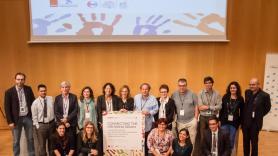Children’s brains are always growing and developing, but unfortunately this complex machine can also break down. Traditionally, pediatric neurology has addressed these problems according to the symptoms that cause them: epilepsy, mental retardation, autism and movement disorders, for example. However this approach isn't enough because the categories overlap and the symptoms are only the external manifestation of the underlying problem. Studying only these manifestations isn't normally enough to treat the problem.
In the words of Àngels García Cazorla, pediatric neurologist at Hospital Sant Joan de Déu Barcelona, we need “a little revolution in the way we approach, research and treat these disorders. The symptoms are important, but treatment must address the underlying mechanisms, not their consequences. And this is why we need to know what’s really going on inside the brain.”
In order to address and comment on all of these challenges and problems, to discuss the latest advances, some of the top experts in the world met for a session of B·Debate, an initiative of Biocat and the “la Caixa” Foundation to promote scientific debate.
CONCLUSIONS:
- Neuropediatric diseases affect up to 20% of all children, but they have traditionally been researched less than those that affect adults.
- Research has been addressed improperly, focusing on symptoms, which in many cases overlap between diseases, and not the mechanisms. This has made it difficult to find treatments that are truly effective.
- We must study brain function from a microscopic and macroscopic point of view. From the synapses that connect neurons to the wiring that connects regions of the brain, what is known as connectome.
- Treatments being studied include drugs to lessen certain disabilities, like Down syndrome; gene therapy and even light-activated drugs.



